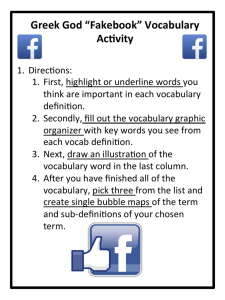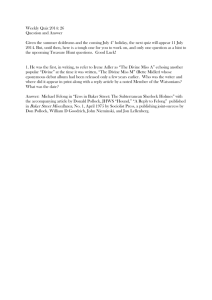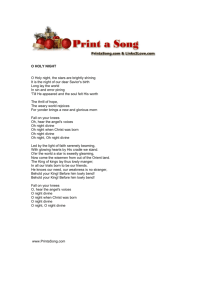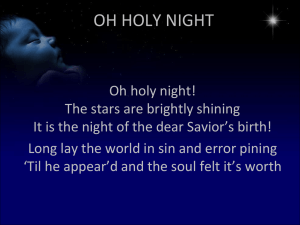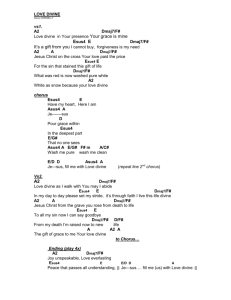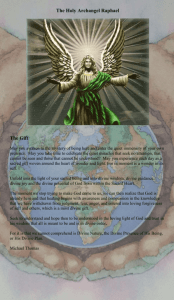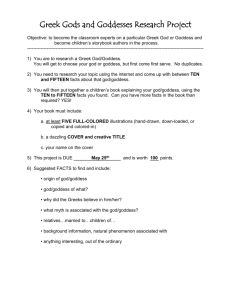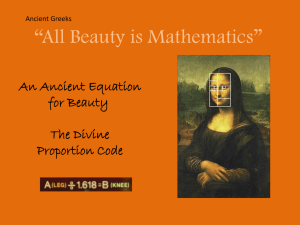Neo Pagan Goddess Concepts
advertisement
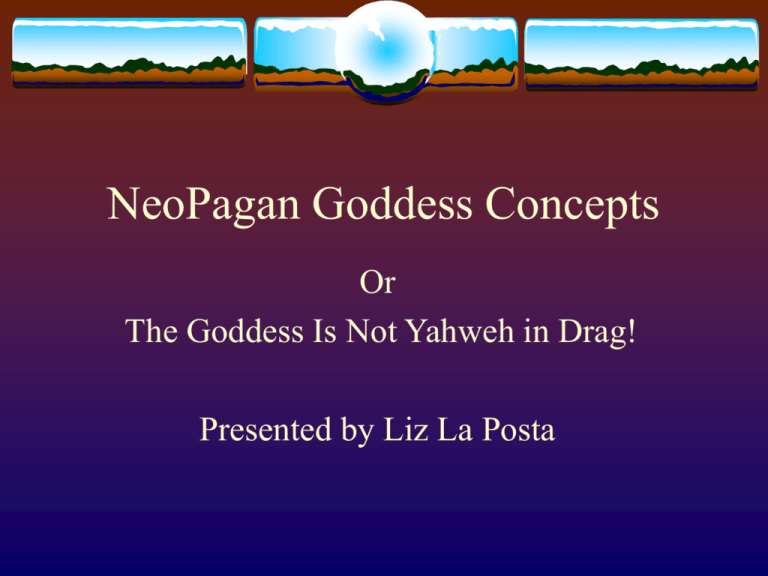
NeoPagan Goddess Concepts Or The Goddess Is Not Yahweh in Drag! Presented by Liz La Posta Gaia: Greek Goddess of the Earth Oldest divine being Parthenogenesis: can reproduce independently Mother of all (Greek) Deities In times of conflict She sides with offspring Can be literally the ground we walk on Python: a giant snake who protects the Oracle of Delphi Gaia Josephine Wall Demeter: Greek Grain Goddess Granddaughter of Gaia Focus on Agriculture Mother of Persephone Queen of the Underworld Inherits the snake symbolism Persephone myth: how the seasons came to be Demeter By “Katlyn” By Mati Klarwein Isis: Egyptian Mother Goddess of Magick Encyclopedia Mythica “Queen of the Throne” Egyptian ideal of loyal wife and mother Used Her magick to resurrect murdered husband Osiris (God of Underworld) and bore His child Horus In “The Golden Ass” by Lucius Apuleius, Isis is considered THE Great Goddess Isis JoAnna Cameron, “The Secret of Isis” CBS ’75-’76 Is the Divine One or Many? Polytheism: many Gods exist and are worshiped Monotheism: only one God/dess exists and is worshiped Henotheism: many Gods exists, but one or few are worshiped Soft Polytheism: one divine being with many different aspects and names Hard Polytheism: individual separate Gods, no single divine source Duotheism: one God and one Goddess, usually with Soft Polytheism Pantheism: God is equal to the forces and laws of the universe Metaphor-theism: God/dess are convenient metaphors for human qualities and issues, but are not literally real. (Pagan Humanism) The Major Trends In my humble experience, within NeoPaganism soft polytheism and duotheism are the most commonly practiced NeoPagan deity concepts, especially within Wicca. The Universal Divine: “The Great Mystery” The Personal Divine: Patron Deities Facets of a Diamond: to comprehend the UD we break It into bite sized parts. Because of our limited powers of perception, we can not fathom the entire whole. “The (Wiccan) God” and “The (Wiccan) Goddess” The Great Goddess ? NeoPagan Ideas vs Traditional Christian Ideas Immanent: the manifest world is the offspring of the divine, we are inherently sacred (Thou Art God/dess!) Multiple in that there are usually many different names and expressions of the divine, even if only one is believed in Dogma is self determined, and seldom the “Only Way” Usually the divine is not all powerful, or all knowing, but is a Higher Being than us Salvation is unnecessary Karma punishes Emphasis on the Feminine Transcendent: the manifest world is separate from the divine, we are not inherently sacred (original sin) Single form with limited names and expressions Dogma: “One Right Way” TM Divine is all powerful and all knowing Salvation from Hell God punishes Emphasis on the Masculine Charge of the Goddess One of the oldest and most widely used and adapted pieces of Wiccan liturgy. Attributed to Doreen Valiente (19221995), a Gardnerian Wiccan Priestess who was taught by Gerald Gardner, the “Father of Wicca”. Adapted from Charles Leland’s “Aradia, or The Gospel of the Witches” (1899) and some ideas from “The Book of the Law” by Aleister Crowley, a Golden Dawn Occultist The original version was published in “Eight Sabbats for Witches” by Janet and Stewart Farrar. Questions ? Waterhouse

